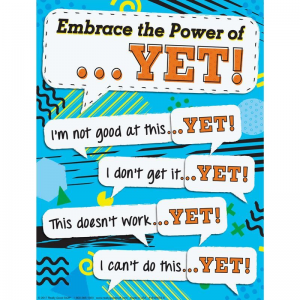 My husband and I went into the idea of remote learning from a bit of a different perspective, with both of us working full time since the day our daughter was born this would be the longest either of us would EVER be home with her since I was home with her during my maternity leave. I think having this positive perspective has given us the mindset that this time together is truly a gift and that we would do our best to remain calm and enjoy this experience to the best of our ability.
My husband and I went into the idea of remote learning from a bit of a different perspective, with both of us working full time since the day our daughter was born this would be the longest either of us would EVER be home with her since I was home with her during my maternity leave. I think having this positive perspective has given us the mindset that this time together is truly a gift and that we would do our best to remain calm and enjoy this experience to the best of our ability.
I can honestly say that it has been a privilege (yes, and a frustration at times) to see my daughter through a new lens – to see her as a student! There have been laughs, frustrations, tears, joy, and Ah-Ha moments! But most importantly I have seen first hand the power of a growth mindset! It is such a miraculous thing to watch and experience, the joy of seeing my 6 year old “get gritty” and overcome a challenge she faces. Whether she is learning to tell time to the nearest 5, building the stamina to read a whole chapter in one setting, or working on a word sort, this kid doesn’t give up! She might get mad at me, frustrated that I won’t let her quit, but once I see she is struggling we take a minute to talk about what she is feeling and work through her problem (both academic and emotional issues at the moment) until she reaches the Ah-Ha moment. The growth I have seen over the past month in her ability to recognize her emotion and work through a difficult situation has been life-changing! If she learns nothing else from me over the 10 weeks of quarantine I will still view her remote learning experience as a success!

I will be straight with you – I have a tendency to roll my eyes (yes, those of you who know me are smiling right now) when teachers talk about growth mindset. It isn’t that I think they are lying, I believe them that they think having a growth mindset is important, but in my experience, I have seen teachers put up a few growth mindset quotes and posters and call that “teaching students how to have a growth mindset”. Even if you believe in the concept of a growth mindset and have a growth mindset yourself, we need to teach students how to develop the skills to embody a growth mindset during difficult situations, we have to teach them that they have the ability to learn and grow…..but how?!?!?
One of my favorite activities to do with adult learners is to challenge them to experience something from a different perspective. Not only does doing a normal, everyday task in a different way help your brain grow, it is also a great way to experience the emotions (frustration, anxiety, disappointment, and Ah-HA moment, etc.) that our students go through when we present them with something new. Shall we try it???
Step 1: Watch the Video –
Step 2: Try It – Get a shoe and try to tie your shoe lace modeling the steps that were outlined for you in the video.
Step 3: Reflect! – What emotions did you feel when doing the activity differently? Did you want to quit? Did you show your new learning to someone new?
Now obviously you have an advantage here – I told you why you would be doing the activity and what emotions you might experience beforehand which always makes it easier to work through and stay calm during. But imagine experiencing these emotions every hour, for 6-7 hours a day, 5 days a week…this is how some students experience school.

Now that we can better empathize with our students and the emotions they feel when learning something new or difficult, I want to provide you with ways of going beyond the inspirational poster in your classroom and actually TEACHING students to develop their growth mindset!
-
- Praise the effort and the process, not the individual – Praising the process sends the message that the effort put into a task is what helped to make them successful.
 Encourage students to explain their answers – Don’t just have them provide you their response, have them explain why they think that or how they came to that conclusion.
Encourage students to explain their answers – Don’t just have them provide you their response, have them explain why they think that or how they came to that conclusion.- Say “Yet” – This would be a good poster to hang and refer to it when a student mentions a negative statement…change it into a “Yet” statement!
- Teach Failure – A growth mindset asks that we embrace failure as a way of learning; however, in education “failure” is punished with a lower grade. How can you flip the narrative and model failure as a celebration and not something students will be punished for.
- Directly Teach Growth Mindset – Watch a video with your students, it could be on famous failures, babies learning to walk, athletic competitions (focusing on the losing team), or maybe just a video of Ormie the Pig for our younger learners. After watching the video discuss grit, growth mindset, & perseverance. Have students reflect on a personal experience from their lives that connected with the movie.
Yes, it takes time to teach and develop a students’ growth mindset, but trust me the time is well spent. Not only will you feel rewarded in the experience of seeing the joy on a students’ face when they overcome a challenge and have their Ah-Ha moment but they will continue to embody a growth mindset in the future which is a life skill that they will continue to benefit from.

Looking for more ideas on how to instill a growth mindset with your students or your child at home? Illinois Online Academy has partnered with Central CUSD301 to offer a 100% online Course on Growth Mindset – only $40, self-paced, and 5 PD Hours – does it get any better than that??? Click here to register
 Katie Algrim – Director of Innovative Professional Learning
Katie Algrim – Director of Innovative Professional Learning
(t):630-444-3044
(c):630-675-4447
(e):kalgrim@kaneroe.org

 Encourage students to explain their answers
Encourage students to explain their answers